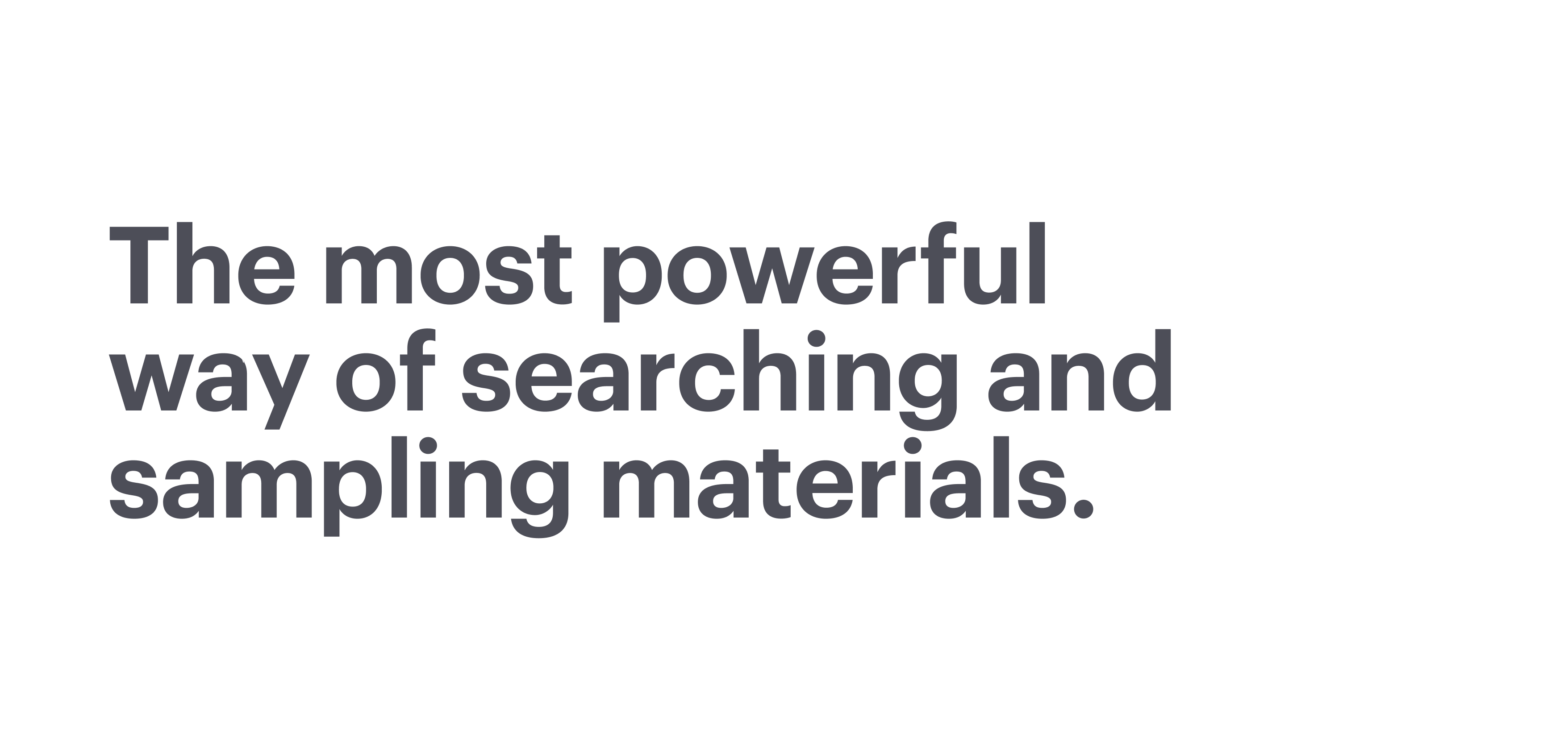To obtain a copy of the typeface, please reach out to the Material Bank Brand Team.
Typography.
Our type is modern, flexible, and rational — conveying information in a clean and simple way without being distracting or obtrusive. Our typeface is called Graphik.

Character set.
This is what Latin characters look like in Graphik. This typeface also supports Arabic, Cyrillic, Hebrew, and Greek characters. For other alphabets, designers and developers should use the closest available approximation.
Uppercase
Lowercase
Numerals and Fractions
Punctuation and Symbols
Mathematical Symbols and Currencies
Weights.
Graphik supports a wide range of widths and weights. Our brand identity uses only Graphik Regular and Graphik Semibold.

Usage.
See examples below of weights in situ. In general, use Graphik Semibold for any copy larger than 20px in size. For anything smaller, use Graphik Regular to maximize legibility and clarity. Headlines should be sentence case with the period at the end.
Headline (Graphik SemiBold)
Subheader, Short Paragraphs (Graphik SemiBold)
Body Copy Above 20px (Graphik SemiBold)
Body Copy Below 20px (Graphik Regular)
Setting type.
Setting type in a way that is clear, clean, and authoritative is crucial to a positive user experience. Here you’ll find some rules that dictate the way copy should look.
Tracking
Tracking is the amount of space given to a piece of copy. In brand-consistent use, tracking should be generally tight. It shouldn’t be too tight or too loose, per the examples below.



Leading
Leading is the space between one line and the next. As an optical rule of thumb, keep leading greater than spaces between words, and keep spaces between words greater than tracking. This creates a smooth experience on the part of the reader.


Alignment
Alignment refers to the flow of text on a page and where its edges are flush. Always use left-aligned or centered typography.









